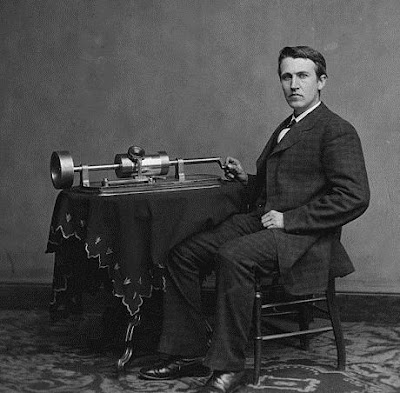Oldest Audio Documenting In Existence To Be Widely Played Tonight
It’s staying called a blast from the past.
An audio recording dating back to 1878 that was actually made on a Jones Edison-invented phonograph will be publicly played out this evening at the Public of Innovation along with Science in Schenectady.
Historians claim that it is the most ancient surviving recording of the American voice and first-ever musical performance. The actual 78-second audio was moved to computer from its unique media: a Your five? x 15? bit of tinfoil. Very few of the tinfoil taking sheets - that didn’t last long even when they were new - continue to exist, and this is apparently one of only two that are nonetheless playable.
According to AP,
“The recording opens which has a 23-second cornet solo of an anonymous song, followed by the man’s voice reciting ‘Mary Had a Little Lamb’ and ‘Old Mom Hubbard.’ The man laughs in two spots in the recording, including at the end, when he recites the wrong terms in the second baby room rhyme.”
The man on the documenting is believe being St. Louis newspaper document Thomas Mason (compose name I.A. Peck), who passed away soon after making the recording.
AP quotes a Museum trustee saying that “in the history of recorded sound that’s nevertheless playable, this is concerning as far back as we can proceed.” The tinfoil was actually donated to the public in 1978.
Eye scanning technology was utilized to replicate the phonograph’s stylus pen, read the foil’s grooves, and make a 3D image that computer software recaptured as the unique audio.
Watch a video on the 1878 Edison music from the London Communicate:
Streaks discovered on Mars this past year could really happen to be triggered by liquid water, according to a different study. The streaks were found by NASA’s Mars Reconnaissance Orbiter spacecraft.
Scientists think that the melting and evaporation of frozen salty water could explain the mysterious dark streaks, reviews NBC News. The lines extend lower some Martian slopes throughout the Red-colored Planet’s warmer several weeks, they fade before winter.
Lead author Vincent Chevrier from the College of Arkansas mentioned:
“In eventually we're able to form enough liquid to produce these flow features at first glance.”
Chevrier and the co-author Edgard Rivera-Valentin, who works at Brown College, analyzed the behaviour water-and-salt blends, known as brines, ultimately visiting the final outcome that this is exactly what produced the lines on Mars.
Because salts can lower the melting reason for water, they might certainly flow around the Red-colored Planet’s freezing surface. The scientists used variations of salt within their model to locate one which exhibits exactly the same behavior they saw around the alien planet.
CBS News notes that Chevrier described, “We needed to look for a salt-water mixture that will appear and disappear.” They determined through their research that calcium chloride fit perfectly.
The scientists could melt enough calcium chloride brine it was not able to evaporate immediately, departing some liquid behind. This produced exactly the same flow features discovered through the MARS orbiter.
Chevrier described the model fits, since it describes why the streaks (referred to as Recurring Slope Lineae) occur seasonally and just on equator-facing slopes. Additionally, it describes why previous imaging spectrometry on Mars hasn't recognized water signatures during these places.
NASA’s Spirit and Chance rovers have previously found signs that water accustomed to flow across many areas of the Red-colored Planet vast amounts of years back. Curiosity even folded past an old streambed just recently.
The brand new study concerning the mysterious streaks on Mars will b released within the journal Geophysical Research Letters.
source: Yahoo! News


